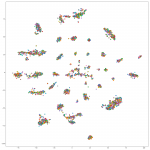
Update 2: node2vec community detection with a co-occurrence graph
Previous post on Louvain On node2vec, we were able to successfully run our weighted co-occurrence graph. After using PCA with TSNE to reduce the dimensions shown, the node2vec model has more well-defined clusters here than on our previous bipartite graph….
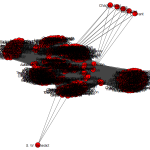
Update: Detecting communities with a co-occurrence graph
Previous post From our previous post, we’ve discovered that the community detection algorithms were mainly grouping based on document/location. This time, we created a new weighted co-occurrence graph of all the people in all documents, similar to the Les Miserables…
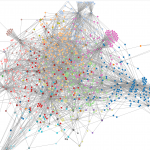
Exploring Network Models
Previous post: Creating a Network Graph There are a number of definitions for what it means to belong to a community. Usually, people are involved in multiple communities, but they have stronger ties to a few of those communities because they know…
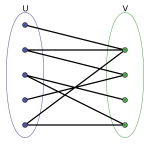
Creating a Network Graph
Previous Post: Data Processing with NLTK From the ccp_people.csv file, we built a simple social network using Gephi. This was originally a undirected graph where each edge represented a connection that two people were in the same document. We first calculated…
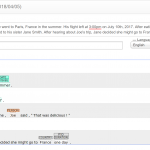
Data Processing with nltk
The Python package, NLTK, is a great starter kit for anyone wanting to learn natural language processing. It can easily perform functions in any text such as finding parts of speech, tagging entities of any kind (person, place, company, etc.),…